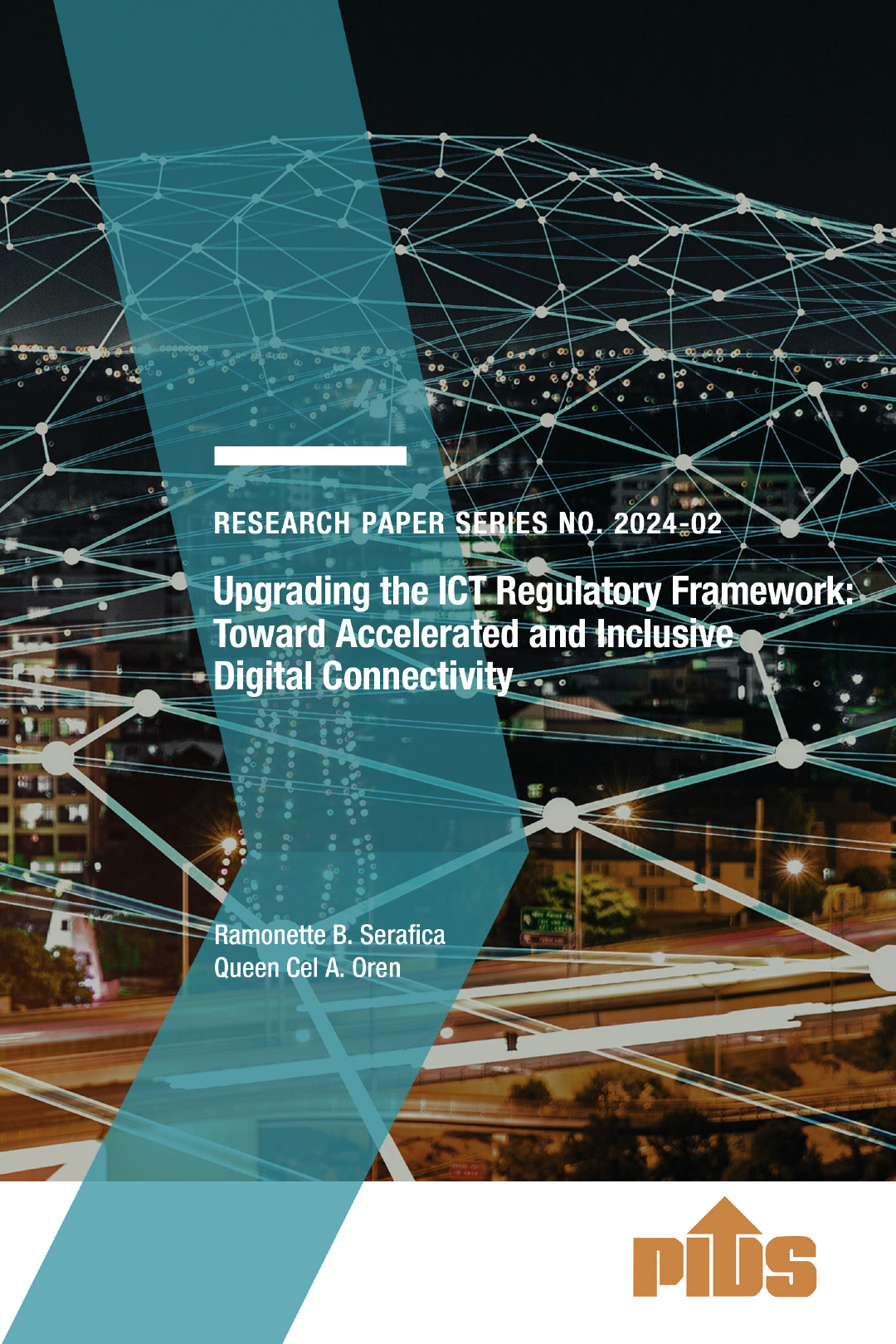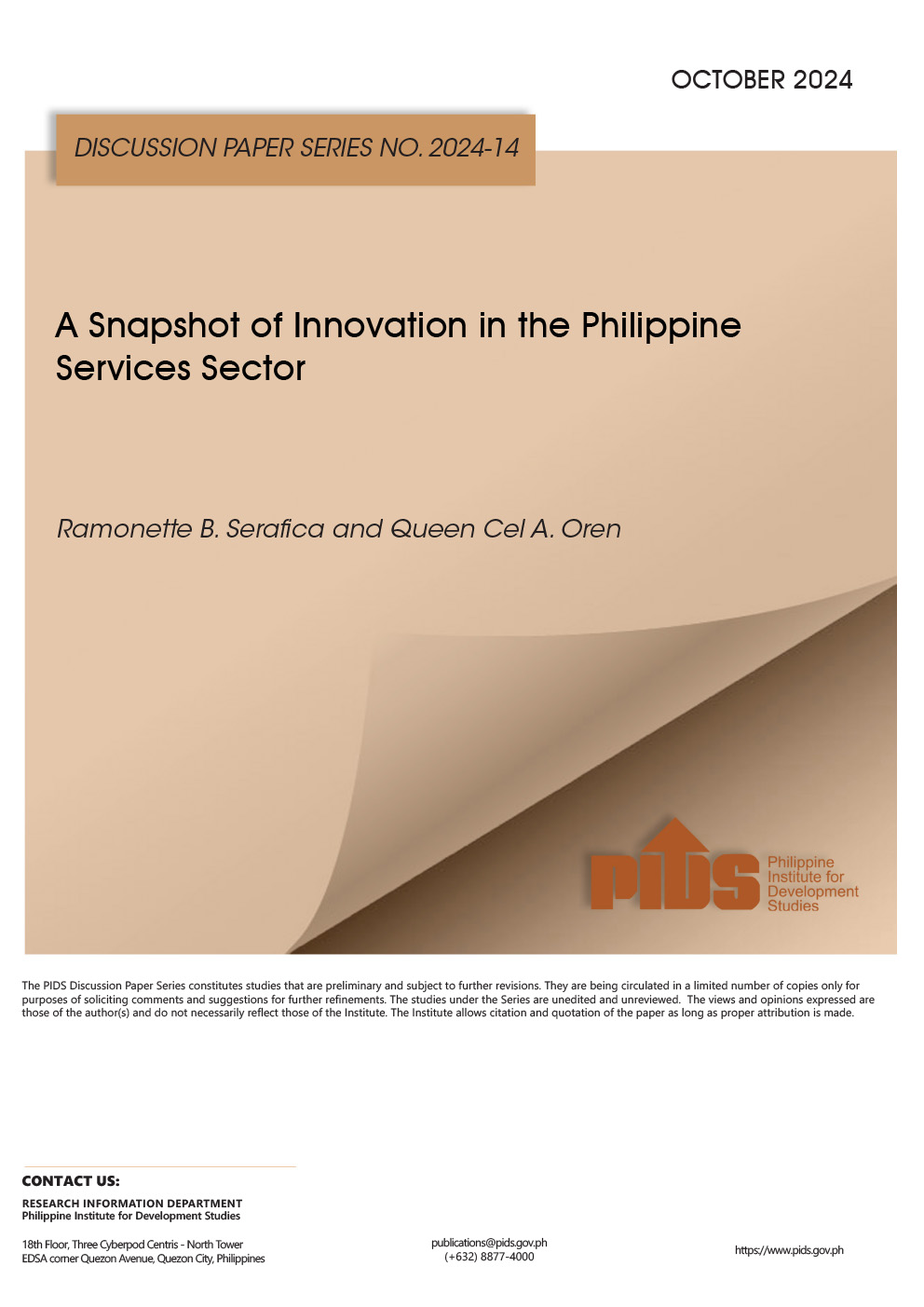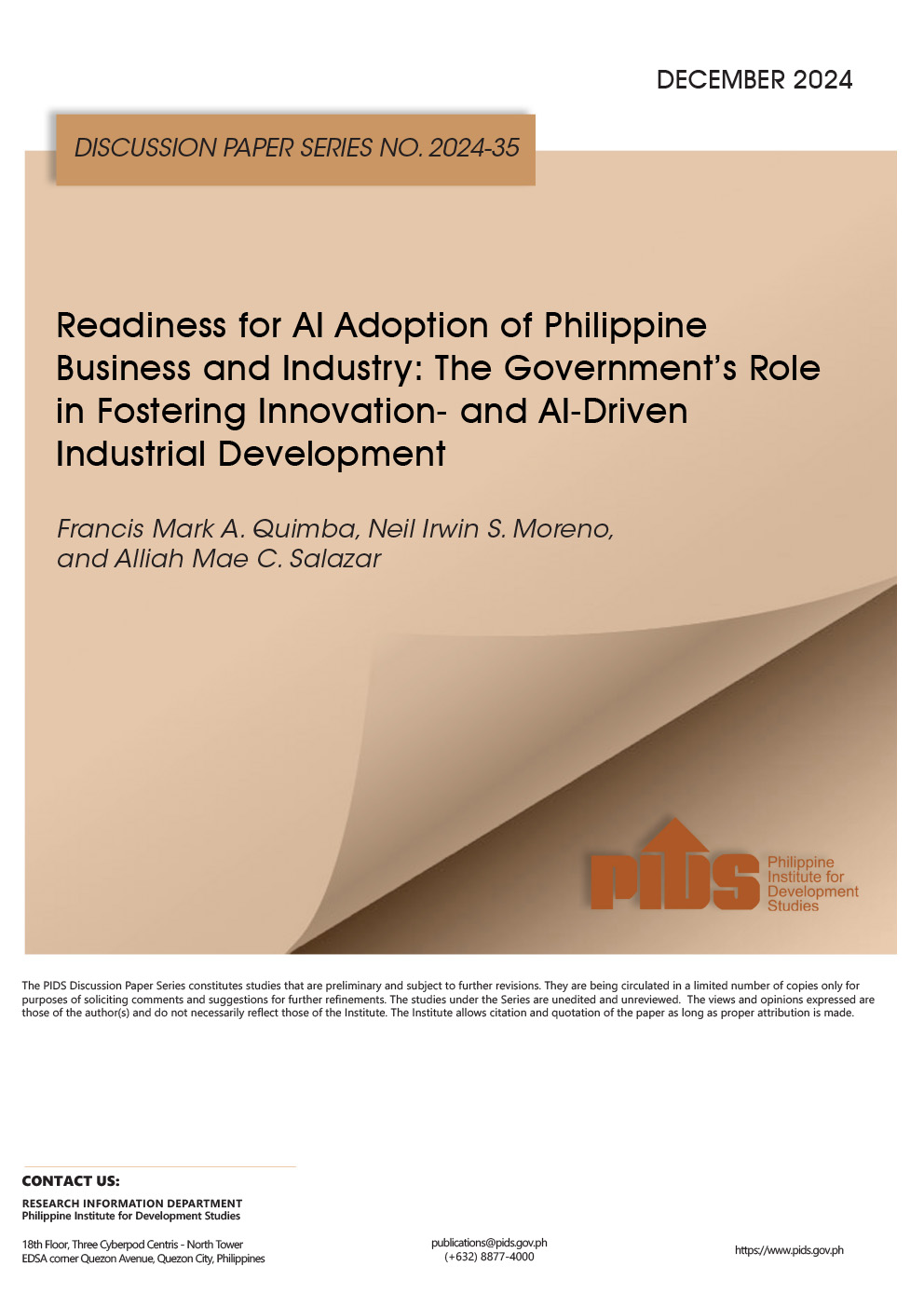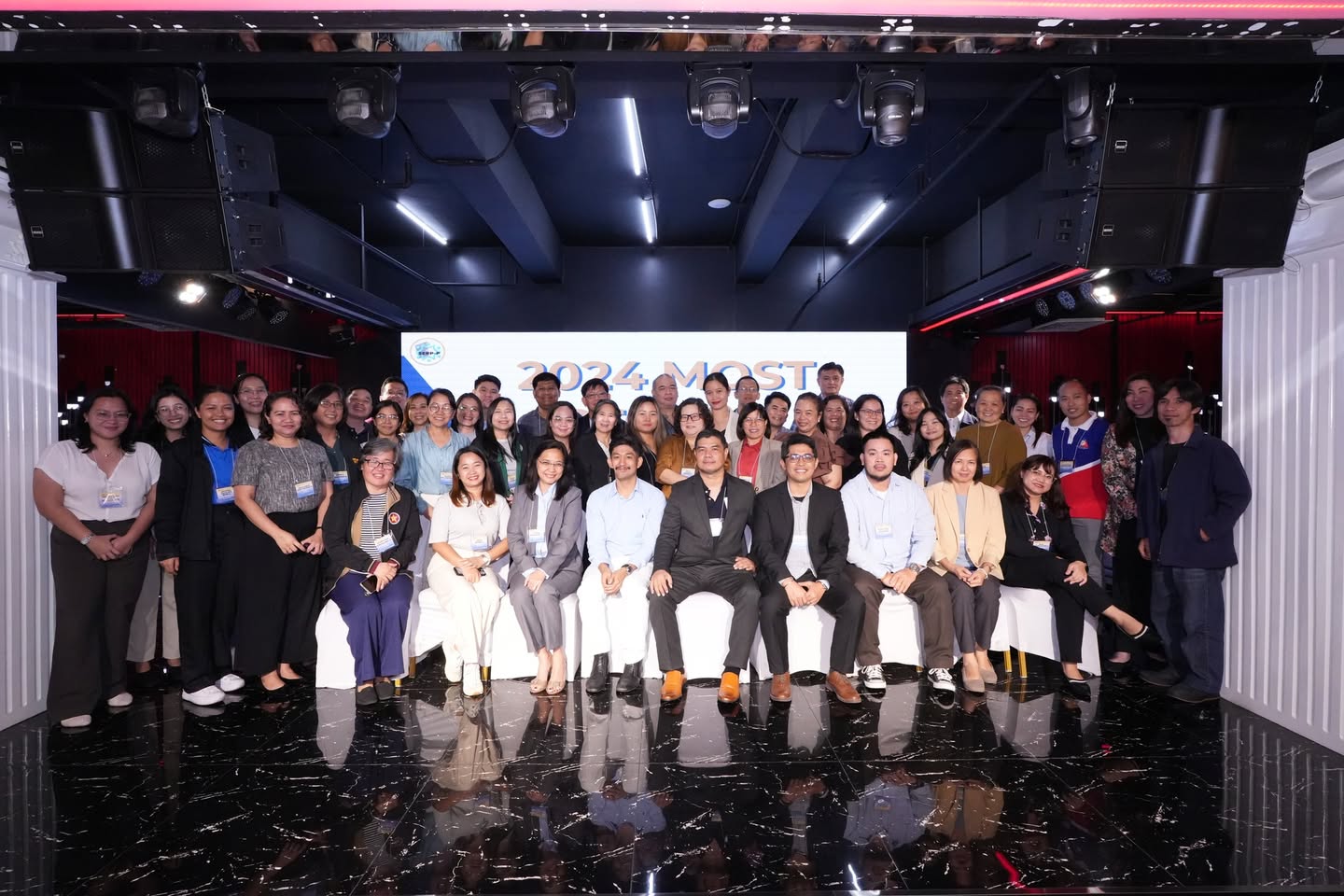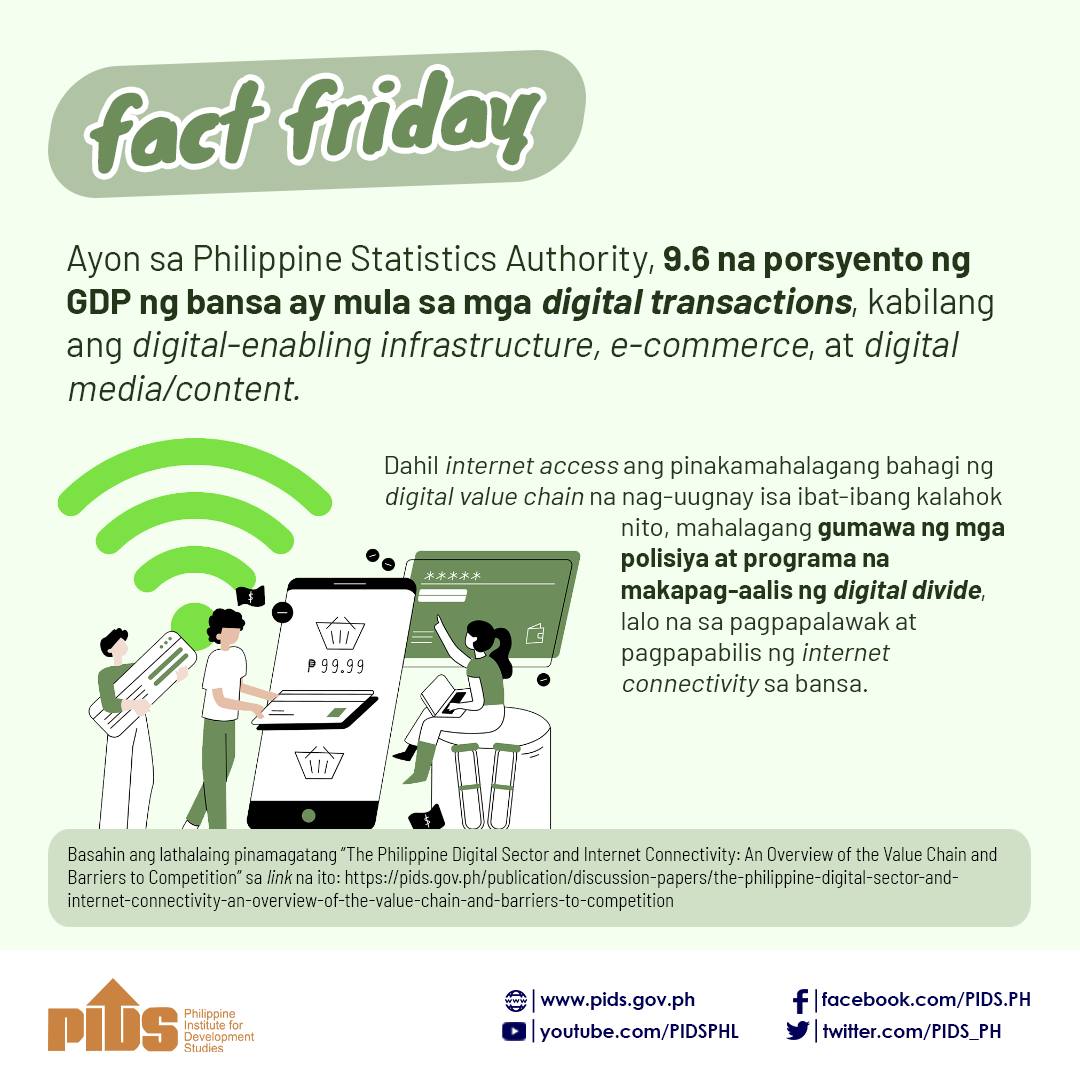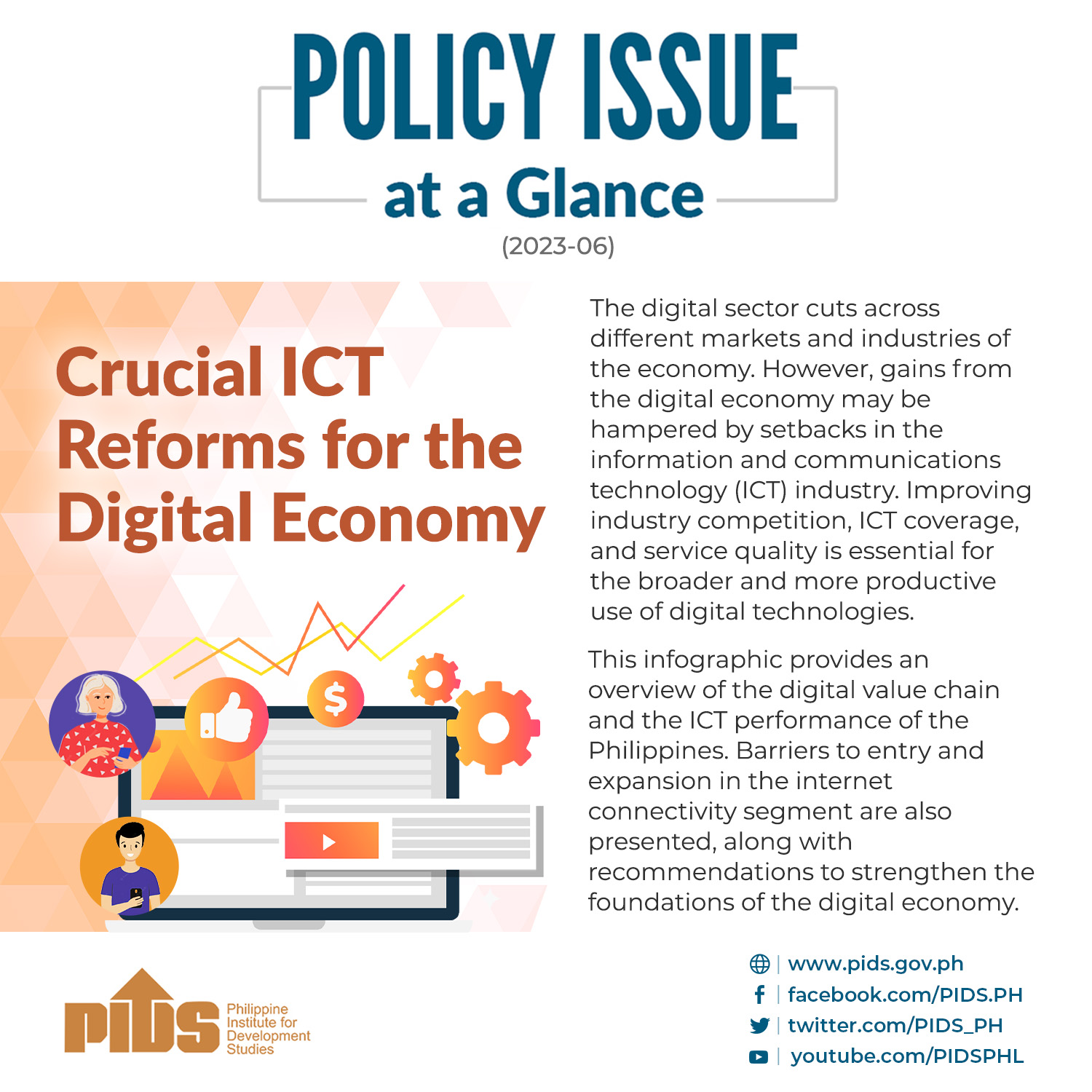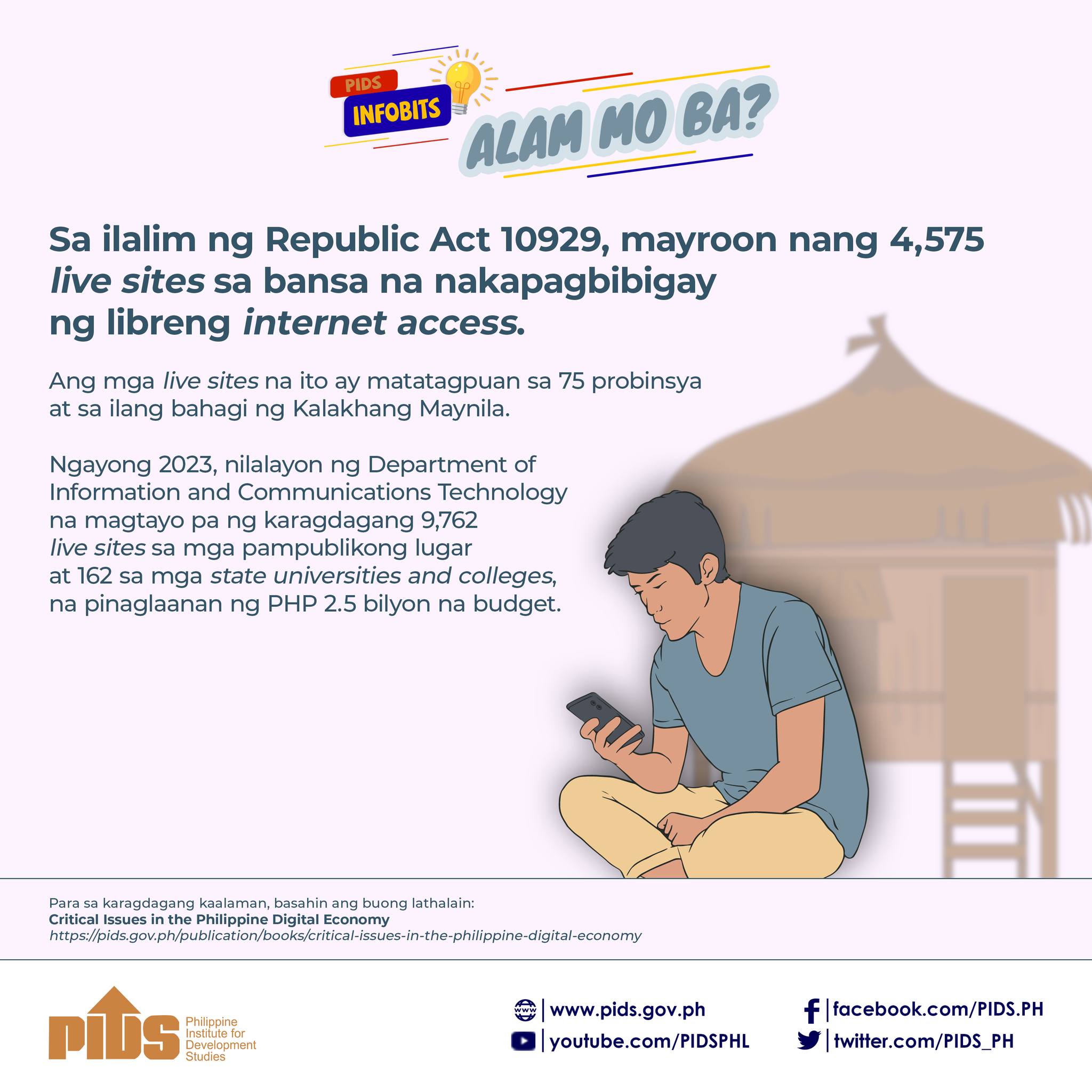Delivering accelerated and inclusive internet connectivity across the country for economic and social benefit must be a policy goal, according to a paper published by the Philippine Institute for Development Studies (PIDS).
“Narrowing the digital divide in terms of internet access must remain the policy priority,” said Ramonette Serafica, senior research fellow at PIDS, and research specialist Queen Cel Oren in a discussion paper.
Serafica and Oren underlined the importance of private-public partnerships in reducing the digital divide, including the implementation of government plans and programs such as free Wi-Fi projects.
“Best practice models for achieving universal internet access should be explored to develop systems targeted at specific markets or user groups,” they said.
Serafica and Oren cited the example of the government providing the service at a lower cost, or building infrastructure that private companies can use to provide internet services to underserved and unserved areas in the country.
By signing up with an email address, I confirm that I have read and agree to the Terms of Service and Privacy Policy.
Citing a previous study, they said the government can also incentivize facility-based broadband providers in areas where internet service is unavailable or inadequate.
“The key to developing workable and sustainable solutions is knowing where the gaps are. The NTC (National Telecommunications Commission) could develop a unified reporting system for ISPs (Internet Service Providers), while the DICT (Department of Information and
Communications technology) could compile and publish a broadband map that identifies internet service availability down to the barangay level, where last-mile competition occurs,” Serafica and Oren said.
Aside from examining options to bridge the digital divide, other areas of research could be useful, according to the authors.
The paper discussed the Internet connectivity value chain, including international connection, domestic backbone, middle and last mile, and barriers to competition in the Internet access connectivity segment.
“Future research could focus on other segments such as content rights, online services and user interfaces, or specific industries such as digital advertising, software development, gaming or esports. Also, specific issues such as self-preference and net neutrality could be explored,” it added.

